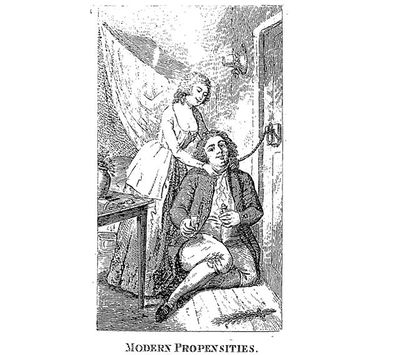Annotation:March in the Battle of Prague
Back to March in the Battle of Prague
'MARCH IN THE BATTLE OF PRAGUE. AKA and see "Battle of Prague (1)," Dow Everly (2)." English, March (4/4 time). D Major. Standard tuning (fiddle). AABB. "The Battle of Prague" is a sonata first published in Dublin around the year 1788 by Frantisek Kotzwara [1] (1730-1791), a Czech expatriate who lived in London and made his living as a virtuoso double-bass player working at the King's Theatre.

The descriptive piece, which commemorates the Prussian victory over the Austrians at Prague in 1757, is the only work of his to survive. Portions of it were quite popular on both sides of the Atlantic in the late 18th/early 19th century. As if being a "virtuoso double-bass player" (how many have there been?) was not enough claim to fame, he is also remembered (perhaps infamously) as the first recorded victim of autoerotic asphyxiation. It seems that the 63 year old gentleman visited a brothel at Vine Street no. 5 in St. Martin's on the night of September 2nd, 1791. There he spent time in the company of a prostitute named Susannah Hill, gave her two shillings for a dinner of ham, beef, porter and brandy, and following their repast he requested that she remove his testicles with a knife; which request she reasonably refused. The musician then proceeded to secure a rope around a doorknob, kneel, tie the other end around his neck, and, apparently while engaged in intercourse with Ms. Hill, he strangled himself. Hill was prosecuted for the musician's murder, although in the end the court found her testimony regarding the night plausible and acquitted her. The court records were supposedly destroyed to prevent public scandal, but a secret copy was made with an eye to future monetary gain-the copy is said to have been preserved and kept at the Francis Countway Library of Medicine in Boston. At the time the incident was whispered about, however, and a year after an anonymous pamphlet was published called "Modern propensities; or, An Essay on the Art of Strangeling, & c. Illustrated with Several Anecdoets. With Memoirs of Susannah Hill, and a Summary of her Trial at the Old Bailey on Friday, September 16, 1791, on the Charge of Hanging Francis Kotzwara, at her Lodgings in Vine Street, on September 2" (J. Dowson, London, 1791).
American writer Mark Twain mentions the piece in his book A Tramp Abroad, when he writes of a salon organist who "turned on all the horrors of 'The Battle of Prague,' that venerable shivaree, and waded in the blood of the slain."
Selections from The Battle of Prague were printed widely. An early version is in Thomas Cahusac's Compleat Tutor for the German Flute (London, c. 1792). The "March in the Battle of Prague" was published in America by J.G.C. Schetky in Philadelphia in 1793. The melody appears in numerous 19th century British musicians' manuscripts, including those of Joshua Gibbons, John Clare and John Moore (see below), and Rev. Robert Harrison (1820, Brampton, Cumbria), James Winder (1835, Wyresdale, Lancashire), William Clarke (1858, Feltwell, Norfolk), John Fife (c. 1780 Perth, Scotland), James Haslingden (1827, Midlands or southern England), William Hall Lister (mid-19th century, East Boldon, near Newcastle) and the Tiller manuscript. Gibbons originally set the tune in the key of F major in his ms. The melody may also be found in English musician John Clare's c. 1818 ms. See also note for "Annotation:Turk's March (1)" for more on Turkish music in Britain.
Source for notated version: the 1823-26 music ms. of papermaker and musician Joshua Gibbons (1778-1871, of Tealby, near Market Rasen, Lincolnshire Wolds) [Sumner]; a c. 1837-1840 MS by Shropshire musician John Moore [Ashman]; the John Clare manuscript (c. 1820, Helpston, Northants) [Callaghan].
Printed sources: Aird (Sixth and Last Volume of Scotch, English, Irish and Foreign Airs), 1803; No. 154, p. 62. Ashman (The Ironbridge Hornpipe), 1991; No. 15, p. 2 (appears as "Grand March in the Battle of Prague"). Callaghan (Hardcore English), 2007; p. 28. Howe (Musician's Companion), 1842; p. 18. Johnson (A Further Collection of Dances, Marches, Minuetts and Duetts of the Latter 18th Century), 1998; p. 2. Sumner (Lincolnshire Collections, vol. 1: The Joshua Gibbons Manuscript), 1997; p. 39.
Recorded sources:
